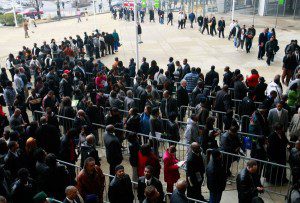The Great Recession pushed the share of the long-term unemployed (defined as being unemployed more than 6 months) to over 40 percent throughout 2010 and 2011. But, a new report from the Center for Economic and Policy Research shows that this standard measure estimate understates the extent of long-term hardship in the U.S. labor market.
“Long-term unemployment rates have been at unprecedented levels for two years now, but the full group facing long-term hardship in the labor market is likely to be at least twice as high as the official figure,” said John Schmitt, a co-author of the paper and a senior economist at the Center for Economic and Policy Research.
The report, “Down and Out: Measuring Long-term Hardship in the Labor Market,” proposes a broader definition of long-term unemployment that encompasses the underemployed and those workers experiencing long-term hardship in the labor market.
The report expands on the official concept of unemployment by including data on discouraged workers — those not in the labor force who want a job but have stopped looking because they believe there are no jobs available; marginally attached workers — those who want a job and have looked in the past 12 months, but are not counted as unemployed because they haven’t looked in the last 4 weeks; workers who are part-time for economic reasons – those who want a full time job but only have part-time work. Together with the unemployed, these groups are the basis for an alternative Bureau of Labor Statistics’ measure of unemployment, known as U-6, which the authors argue gives a more complete picture of long-term hardship.
While the Bureau of Labor Statistics does not track the length of time workers have fallen under these categories, the authors demonstrate that under reasonable assumptions, the share of workers facing long-term hardship may be twice as high as the share that is long-term unemployed by the standard measure.
Under these same assumptions, between 2007 and 2010, long-term unemployment increased almost as much in these unofficial channels as it did under the more narrow definition.
The full report can be found here.



